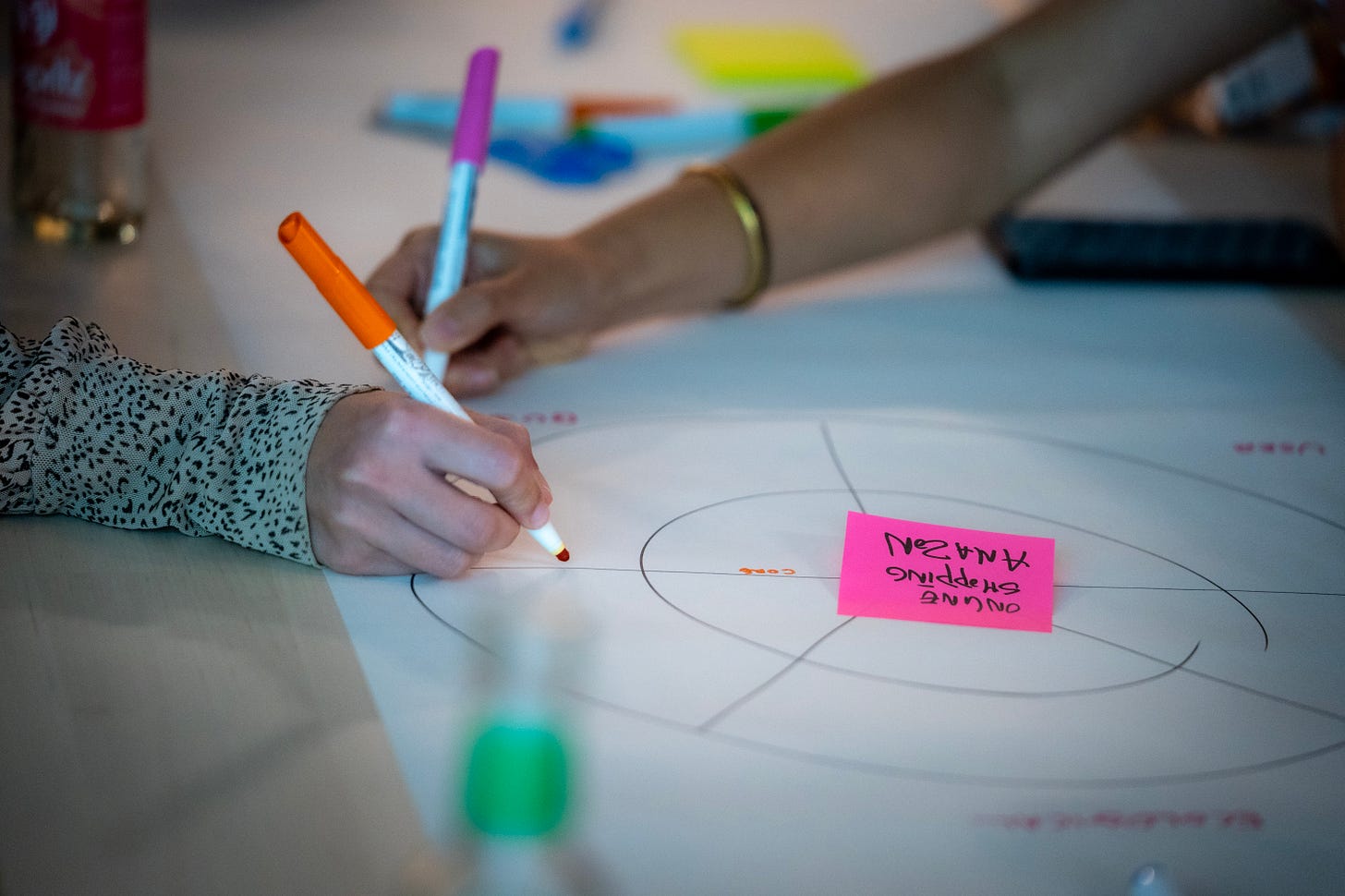Sometimes it feels like people in the industry expect design thinking to solve all the problems. However, design thinking is just one framework and centers around only the user’s context, needs, and challenges. In my episode with Karin and Jeff, we talk about the shortcomings of frameworks. I also chat with author of Closing the Loop, Sheryl Cababa on systems thinking. In reality, designers should be looking at each challenge with fresh eyes and assessing,
which frameworks make sense 🤔
how can a framework be tailored to the problem.🎯
Systems Thinking Primer
Imagine you're designing a food delivery app. Your initial brief appears straightforward: “Create an efficient platform connecting hungry customers with local restaurants.” Simple, right? Not exactly. One thing I talk about in my growth course is not getting tunnel visioned on one metric. Let’s go through why.
The Food Delivery App
Trevor was tasked with optimizing a food delivery app's driver allocation system. His initial solution was elegant: an AI powered system that assigned drivers to the closest restaurants, maximizing delivery speed. Early metrics hit the mark with delivery times dropping by 32%. A great success!
But 3 months later, problems emerged:
Drivers were clustering in popular neighborhoods, leaving areas under served
Small restaurants in less popular areas were losing business because of estimated wait times
Drivers were making less money due to increased competition in hot spots
Environmental impact increased as drivers drove longer distances to reach popular areas
Drivers leave the platform and some go to a competitor
What the heck happened?
Trevor’s design was efficient but did not take a systems approach. He'd optimized for a metric without considering the broader ecosystem.
Enter Systems Thinking 💡
Whereas design thinking is user centered, systems thinking considers all stakeholder involved. Systems thinking is an approach that focuses on understanding how different parts interact within a larger whole. Instead of looking at isolated people or elements, we examine relationships, patterns, and the ripple effects of changes across the system. This is a lot more effective in solving complex problems.
Why Designers Need Systems Thinking
As designers, we often focus on immediate user needs and direct interactions. The reality is unlike a nice contained school project, our solutions exist within complex webs. When technology scales it can have negative societal impact, environmental impacts, or unintended consequences. Taking advantage of systems thinking as a mindset can help you effect positive change.
Expanding to Systems Thinking for a Ride Share App
Keep reading with a 7-day free trial
Subscribe to Conscious Tech to keep reading this post and get 7 days of free access to the full post archives.





